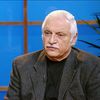
The good news for the United States from this year's Nobel Prizes in science -- announced earlier this week in Stockholm -- is that eight of the nine winners are Americans. But, a fuller analysis reveals facts and insights that should both concern and energize policymakers who care about future U.S. leadership in science.
Of the eight Americans who won the 2009 Nobel Prizes in Physiology or Medicine, Physics and Chemistry:
- five were born in other countries (Australia, Canada, China, England and India);
- four received undergraduate degrees outside the United States;
- three received all of their education through their PhDs outside the United States;
- three hold dual citizenship;
- one lives full-time in England and another is based in Hong Kong, and
- one conducted his winning research in England.
Only three of the eight were educated entirely in the United States. In addition, the research that resulted in the Prize in Physics was conducted 40 years ago, and the research that yielded the Prize in Medicine some 20 years ago.
These awards speak volumes about the key role of immigration in American scientific leadership, and two of the three winners in Medicine addressed that fact. According to The New York Times, Dr. Elizabeth Blackburn, who came to the United States from Australia in the 1970s, said that while America is still a magnet for foreign scientists, "one shouldn't take that for granted." Dr. Jack Szostak added, "So maybe we have to work a little harder to attract people from around the world and make sure they stay here."
Dr. Thomas Cech, former president of the Howard Hughes Medical Institute, in commenting on the awards, noted further, according to the Times, that the more onerous visa requirements imposed on foreign scientists in the wake of the Sept. 11 attacks were benefiting European countries especially. He added, "Even now, there is an implication when foreign scientists apply for visas that they should be distrusted, denied several times, and should have to hire lawyers and jump through a lot of hoops."
The awards also speak to the importance of providing research opportunities to young scientists. The winners in Medicine were all in their 20s and 30s when they conducted their groundbreaking research, and one of them, Carol Greider, was just 23 and a graduate student in Dr. Blackburn's lab, when she went into the lab on Christmas Day in 1984 and realized that she had captured the enzyme now known as telomerase. Two of the winners in Physics were also in their 30s when they made their breakthroughs.
The prize-winning research in medicine also underscores the importance of pure research. As the Times reported, the discoveries were made "in pursuit of a purely scientific problem that seemingly had no practical relevance." They later proved to be vastly important to two areas of medicine, aging and cancer, "because of their role in limiting the number of times a cell can divide."
In the prizes for both medicine and physics, scientific collaborations were crucially important. Drs. Blackburn and Szostak worked together, and Dr. Blackburn trained Dr. Greider. Drs. Willard Boyle and George Smith, co-winners in physics, worked together at Bell Labs.
As the Wall Street Journal tells their astonishing story, "In 1969, Drs. Boyle and Smith were trying to come up with new memory-chip ideas for data storage. Dr. Boyle was working on a device called PicturePhone. He was struggling to improve the screen image via clunky electronic tubes. The pair met one day, stood at a blackboard in Dr. Boyle's office and tossed ideas about. Within an hour, they had their answer -- an image sensor that could gather and read out the signals in a large number of pixels, or image points, very quickly. They sketched out the design of a CCD, and within a week they had built a prototype." Here was a groundbreaking discovery that literally unfolded in an hour when the right two scientists came together.
The prize in physics also underscores the importance of corporate research facilities. All three winners made their discoveries in the 1960s while working at corporate laboratories -- Dr. Charles Kao at Standard Telephones and Cables' lab in Harlow, England, and Drs. Boyle and Smith at Bell Labs.
The Wall Street Journal reports: "Big companies now tend to spend less on such basic research, investing instead on projects likely to pay off quickly. Much of the action in long-term research has shifted to universities, often working in collaboration with government agencies and companies ... Companies that still conduct basic research include Microsoft Corp., International Business Machines Corp., Xerox Corp., and Hewlett-Packard Co ... Prith Banerjee, director of HP Labs, said about two-thirds of the labs' projects are relatively short-term initiatives that are intended to produce results within about five years. The remaining third is basic research that may not pan out for a decade or more.
Today, immigration for promising scientists is more difficult in the United States than it used to be; corporate laboratories are doing less basic research, and the average age of all grant recipients of the National Institutes of Health has grown from 40.9 in 1970 to 51.7. These worrisome trends should all be addressed. As a nation, we have our work cut out for us, if we want to maintain the scientific leadership that has been at the core of our economic prosperity.
James M. Gentile, Ph.D., is president and CEO of Research Corporation for Science Advancement, America's second-oldest foundation (www.rescorp.org.).
